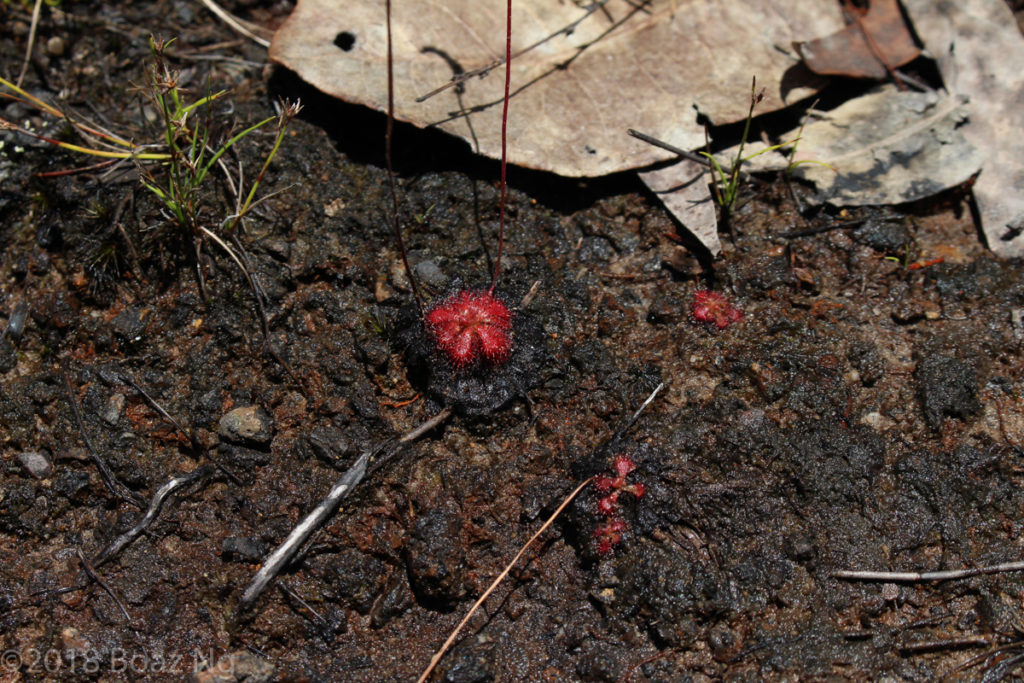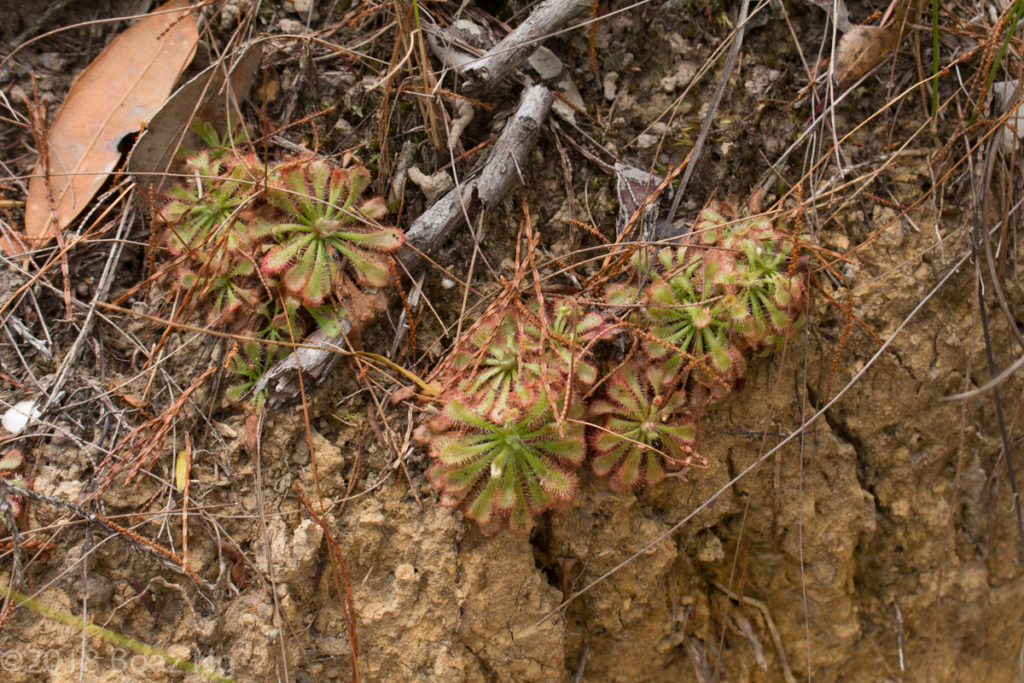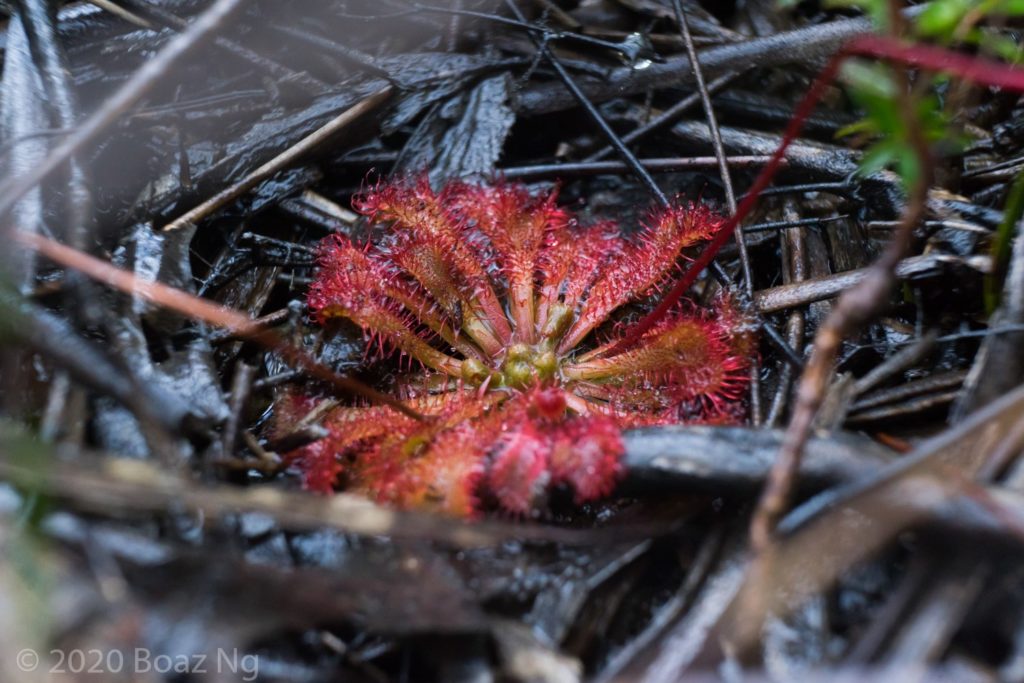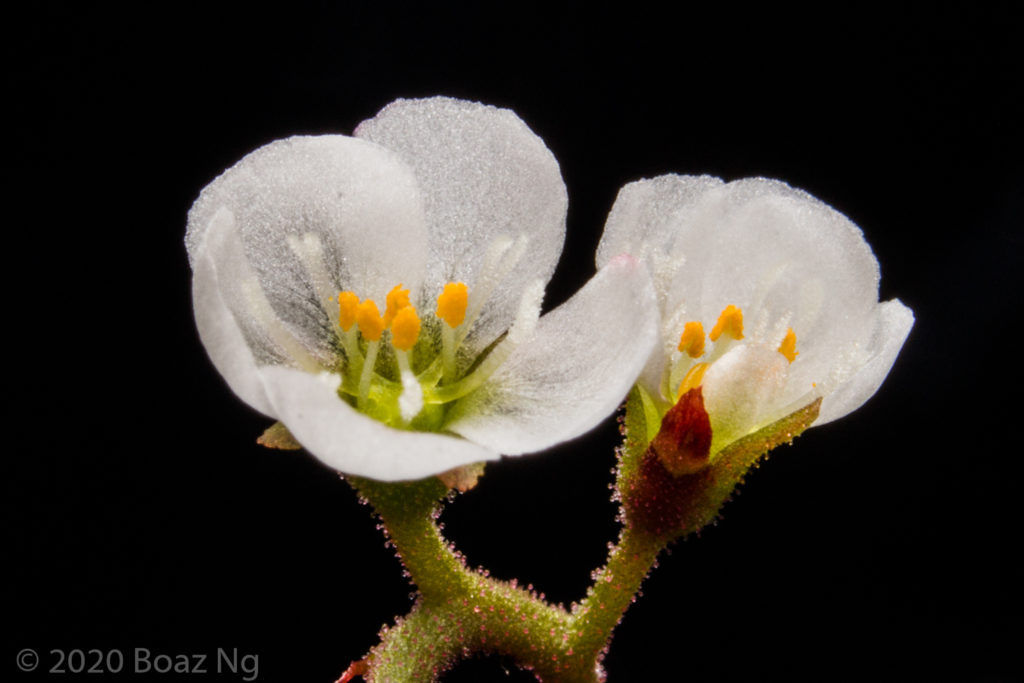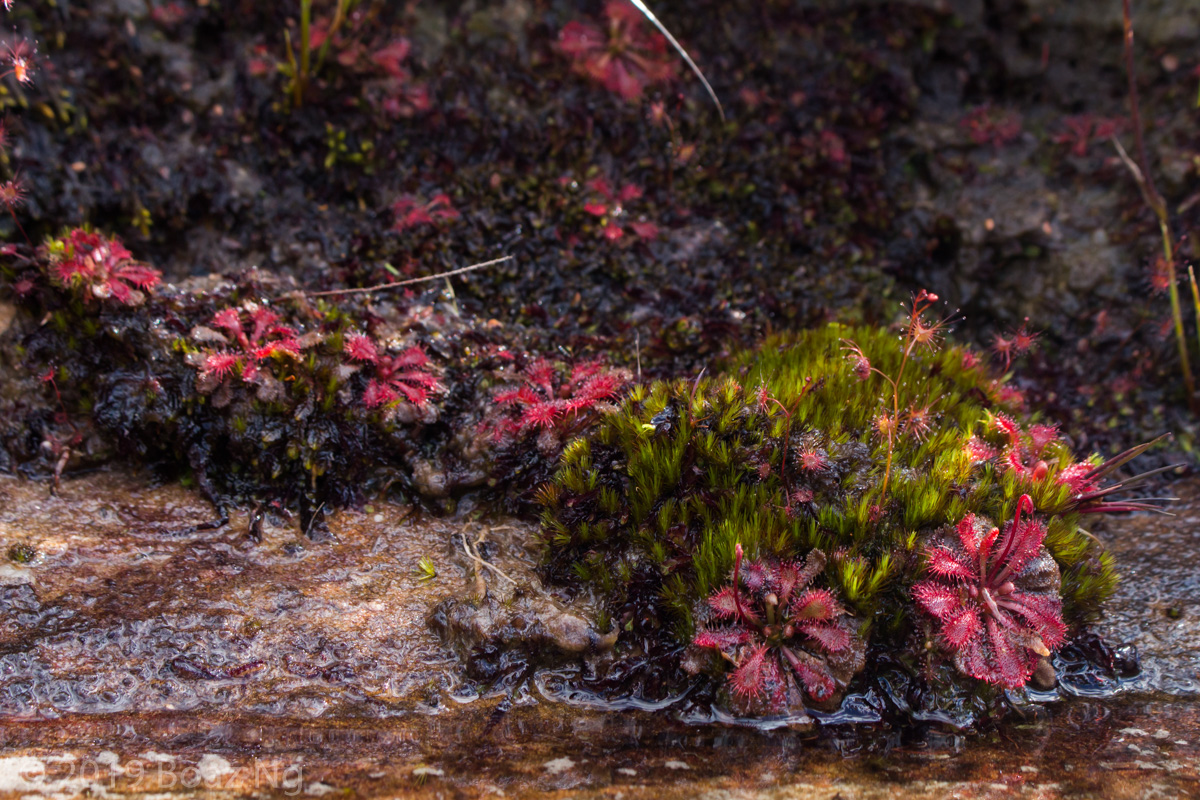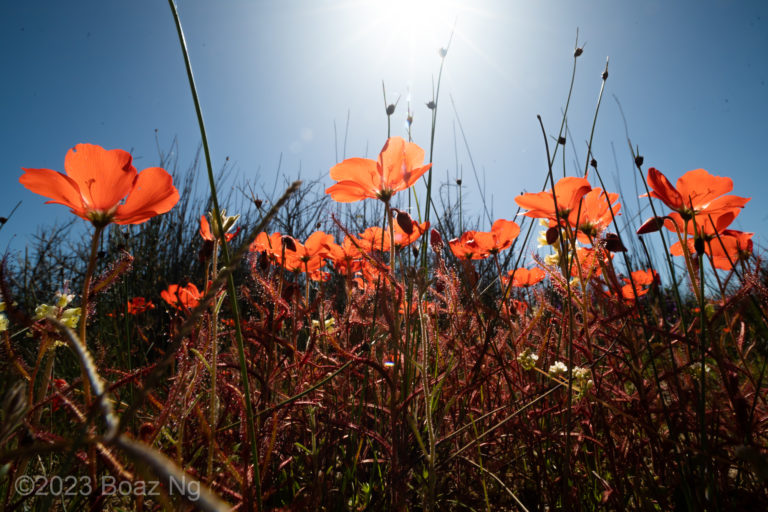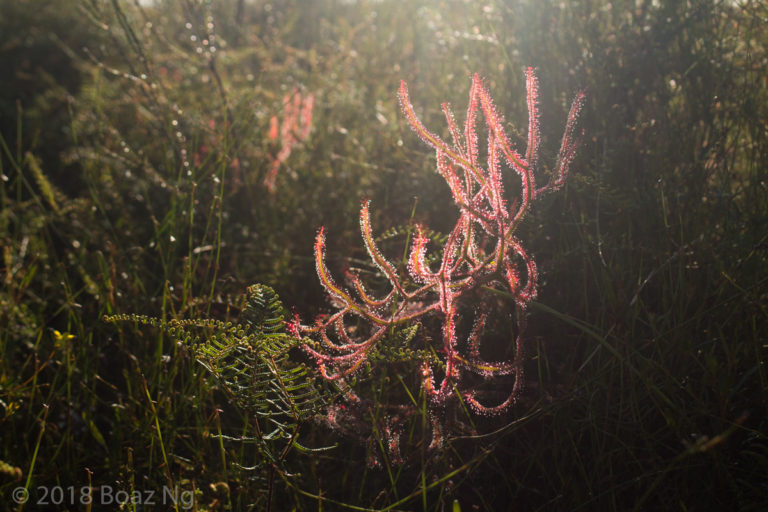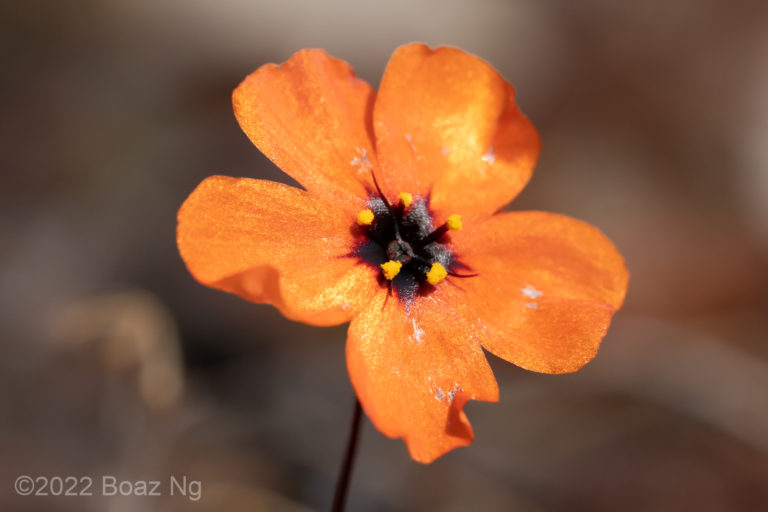Drosera spatulata is a rosetted sundew widespread across Australasia, SE Asia and E Asia, growing from New Zealand up the east coast of Australia, across SE Asia to China and Japan. It is more accurately described as a species complex as it is very morphologically variable across its range. As one of my favourite species, I have spent a good deal of time observing it across its range. This post focuses on the ‘typical’ Australian Drosera spatulata var. spatulata – I have made other posts on the New Zealand alpine form, var. gympiensis, and the species complex in Hong Kong.
Note: It is important to recognise that this species readily changes its appearance in response to environmental factors such as water availability and light intensity. Characteristics such as size, coloration and leaf shape (in most situations) are not reliable indicators of the geographic origin of the species and plants in the same vicinity can have vastly different appearances. Drosera spatulata var. lovellae from Fraser Island was initially described as a separate species in 1893 based on a single preserved specimen. While that particular specimen had four styles compared to the usual three in other D. spatulata, it is within the normal variable range observed in the species. It is of my opinion that Drosera spatulata var. lovellae is not any different to Drosera spatulata var. spatulata.
Drosera spatulata was first described Labillardière in 1804, near Southport in Tasmania. This form of the plant is now often referred to as Drosera spatulata var. spatulata (to distinguish it from some of the more extreme forms). Across Australia, most of the plants generally fit this description.
Drosera spatulata var. spatulata has obovate-spatulate lamina which tapers to a broad flattened petiole that is generally a bit narrower than the lamina. The tentacles of the lamina extend to the petiole and gradually diminish towards the centre of the plant. The underside of the leaves are variably hairy. The leaves are held flat along the ground and range from around 1-3 cm in length (more or less in extreme circumstances). The floral peduncle is covered in small glands and is slender in thickness, branching in substantial specimens. The scape is erect and held high above the ground. The flowers form consecutively along the end of the scape and vary in number according to the health of the plant. The petals are white or pink, with both colourations sometimes present within the same population. Plants are variably coloured from green to red, which is very strongly influenced by the season and light availability.
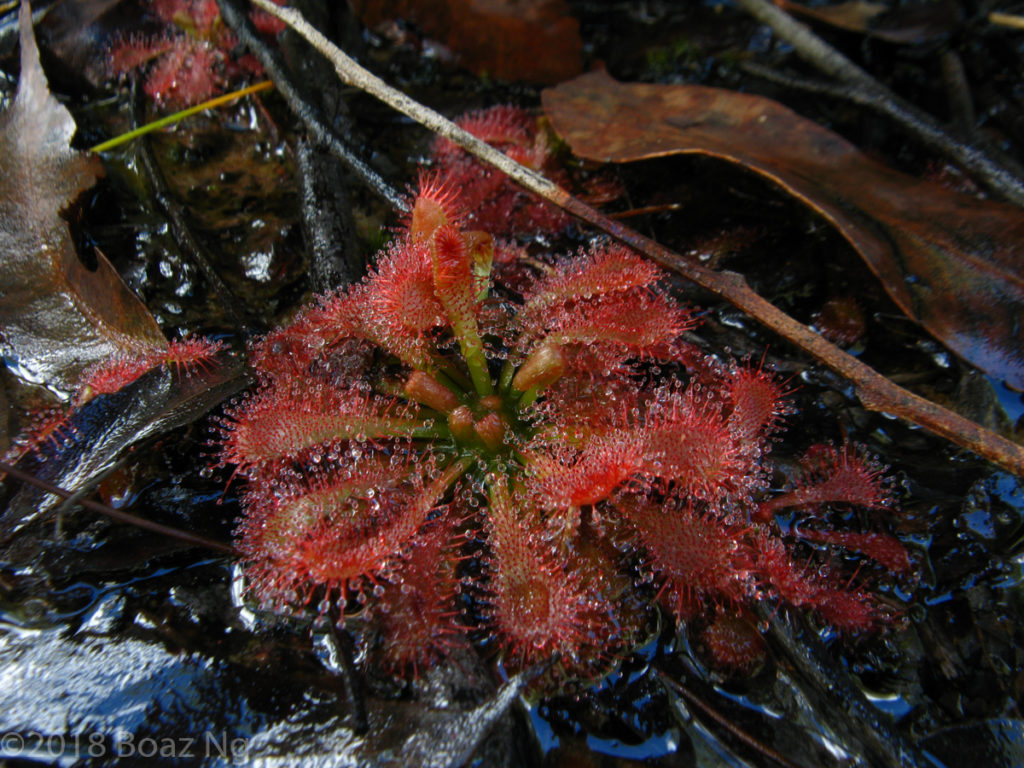
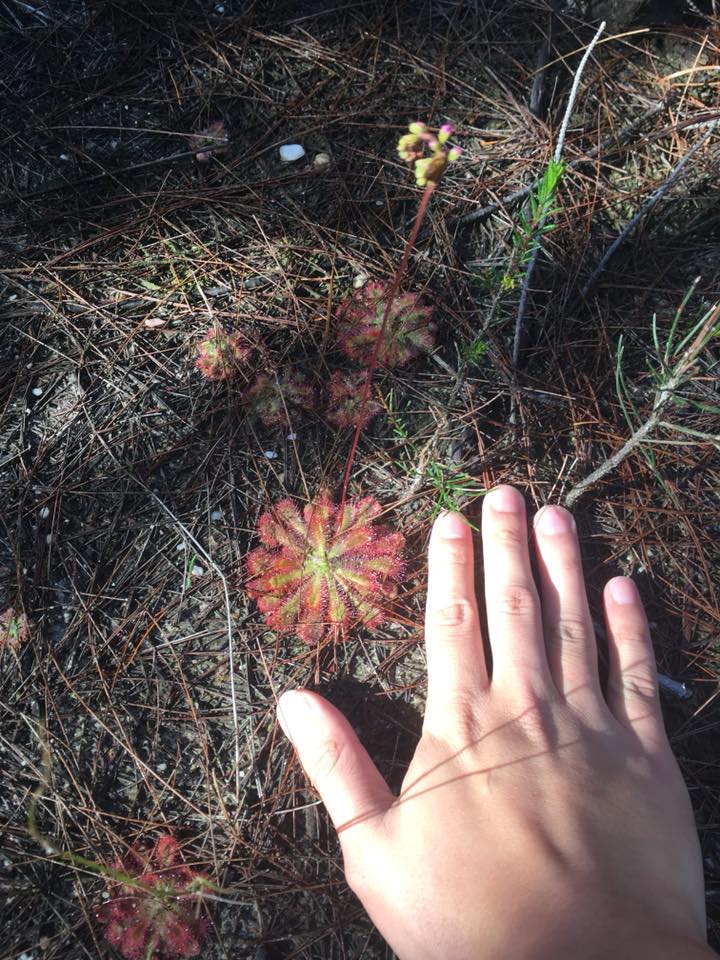
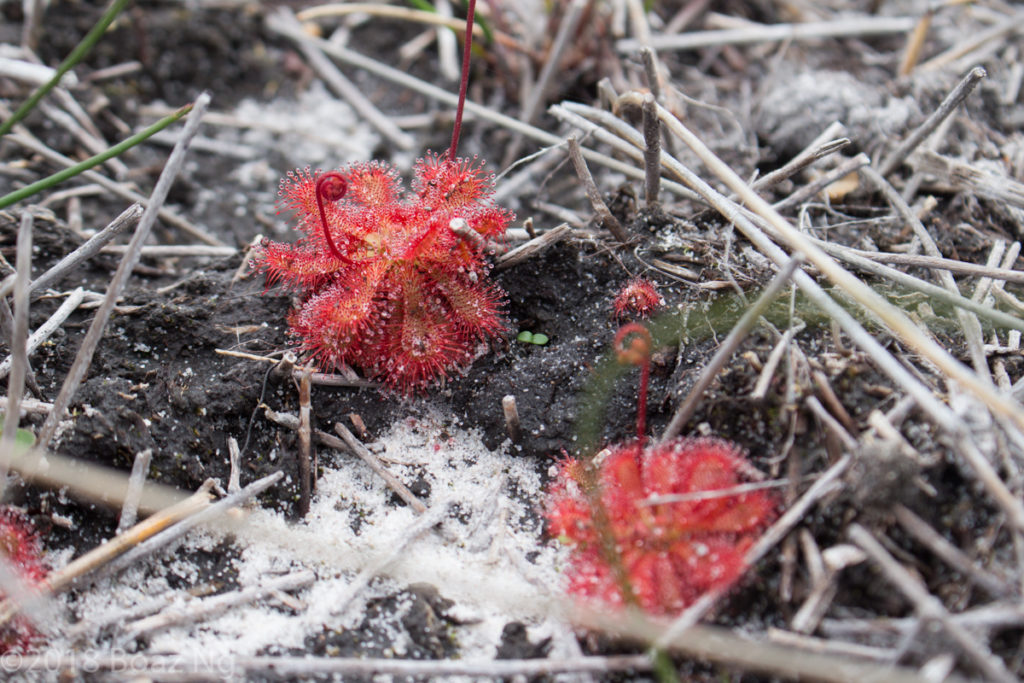
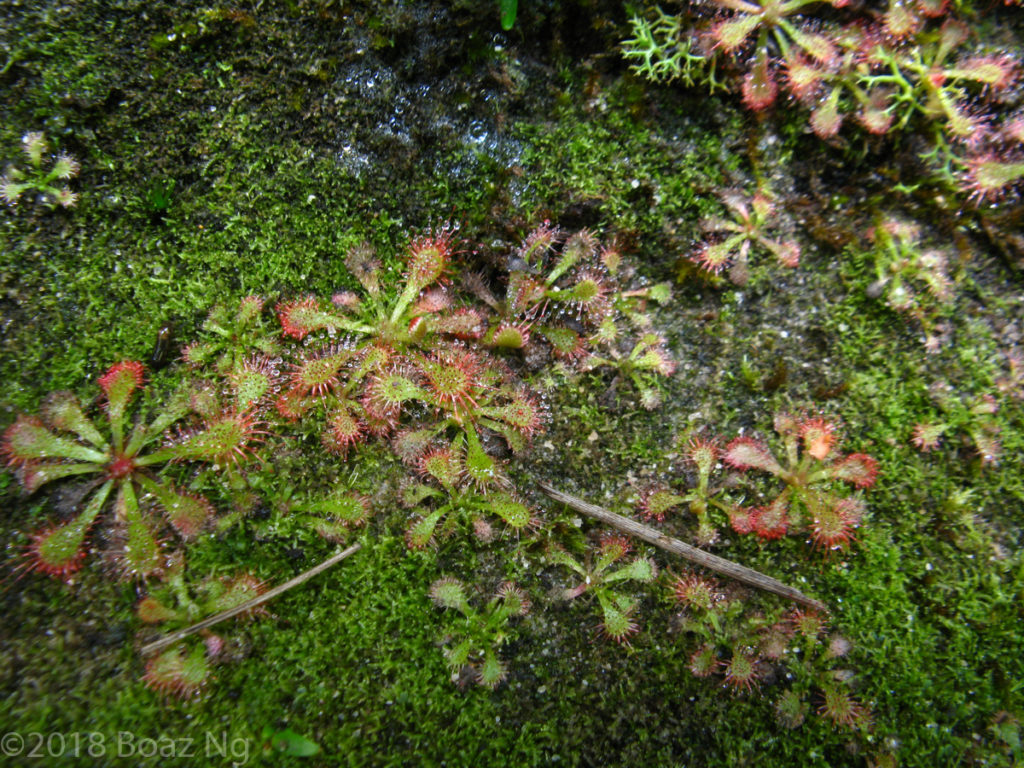
Drosera spatulata growing in a heavily shaded location by a waterfall. 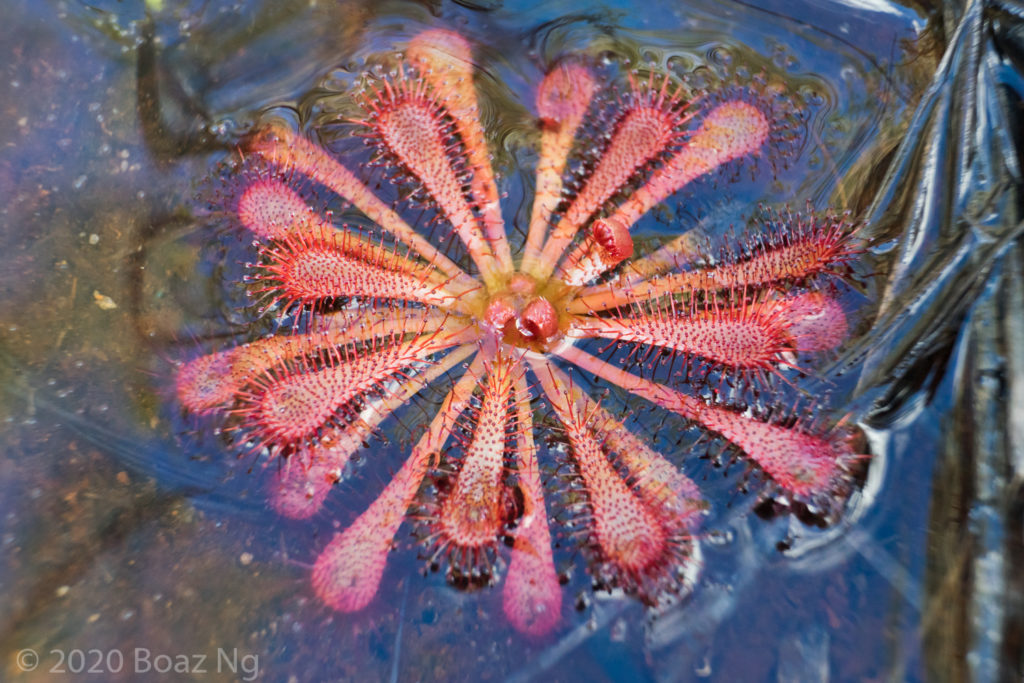
Drosera spatulata often forms very long leaves when its niche is inundated. It will revert back to a compact morphology when the water recedes. 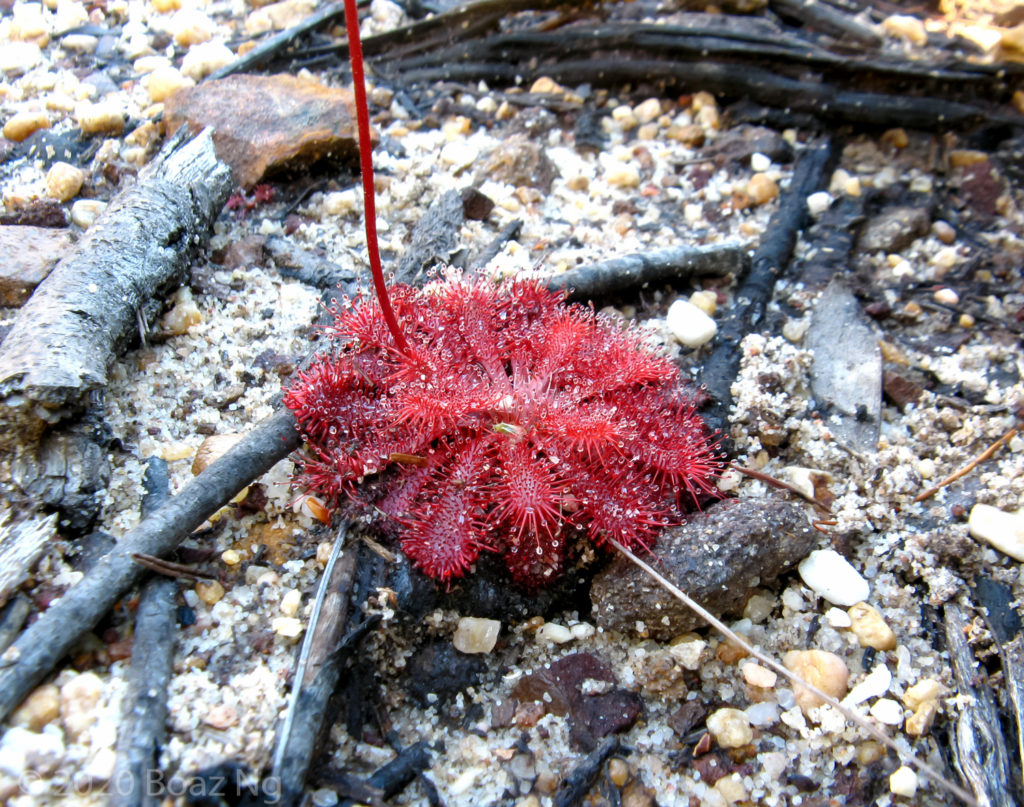
Drosera spatulata growing in full sun at the side of a trail.
